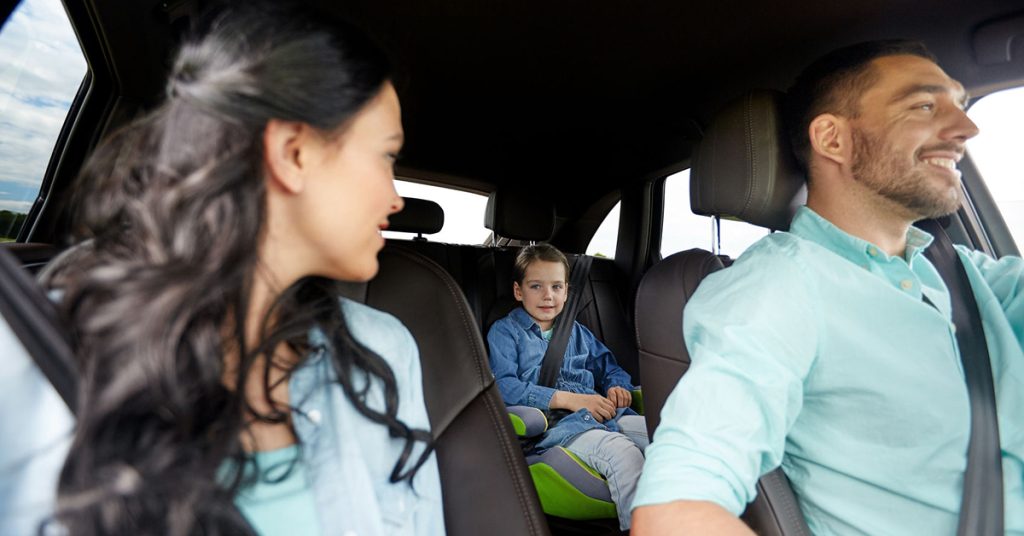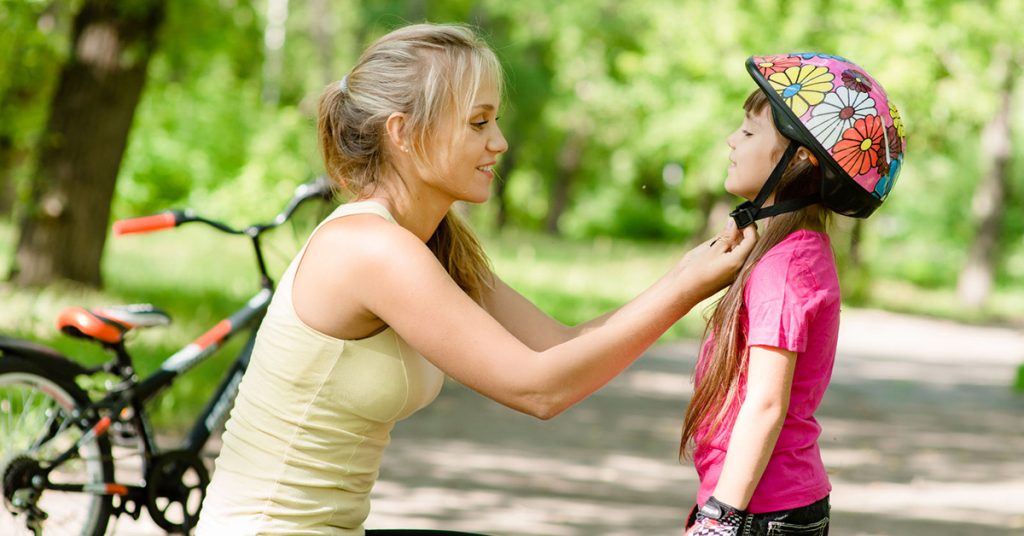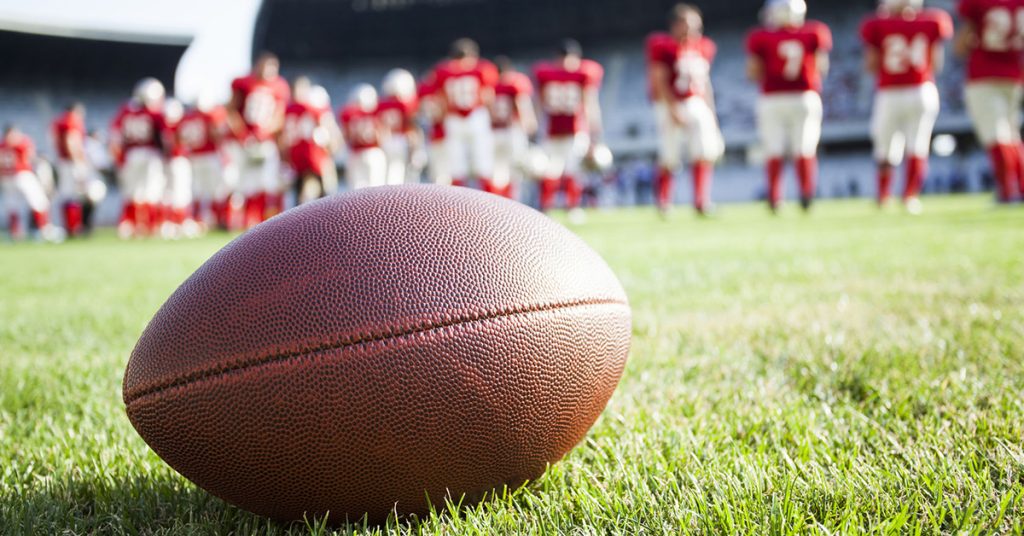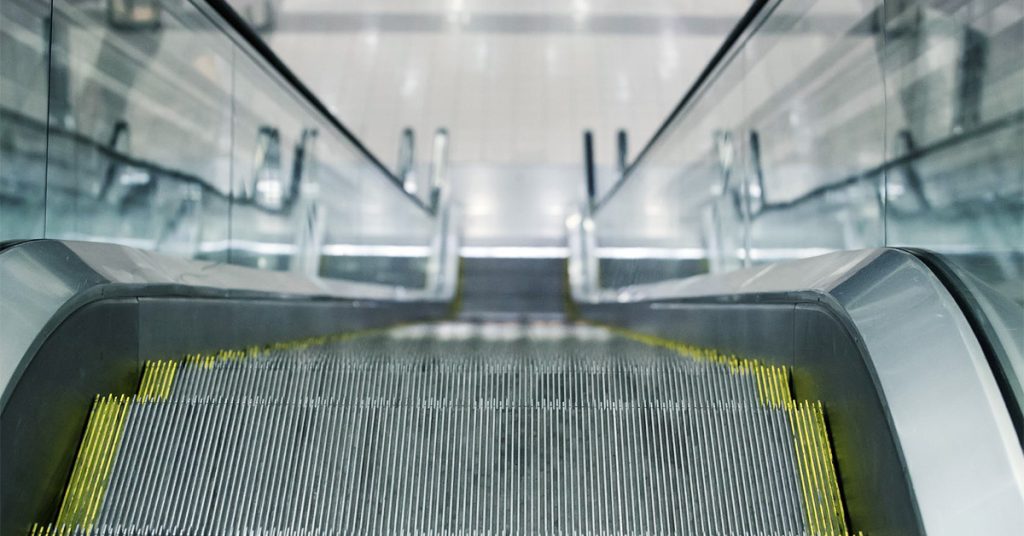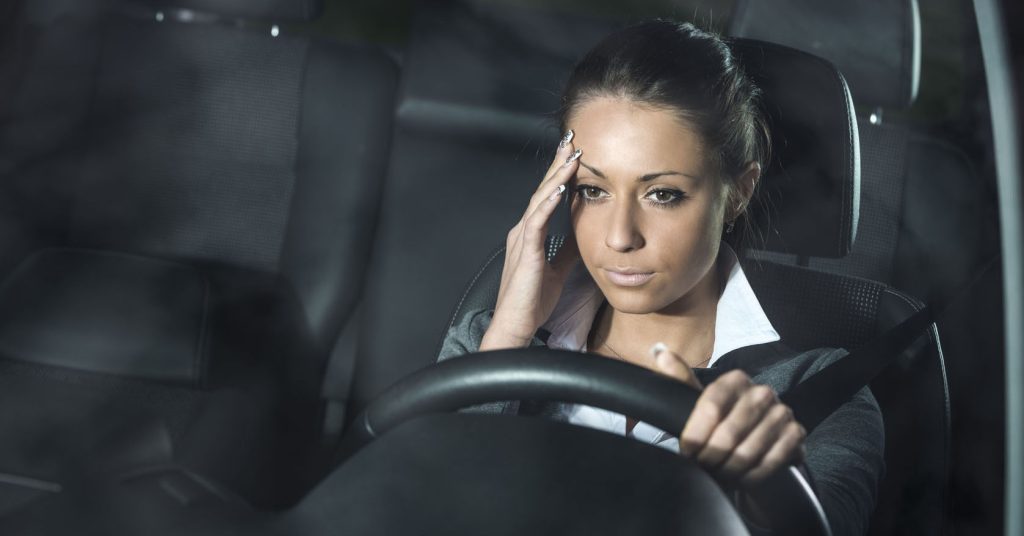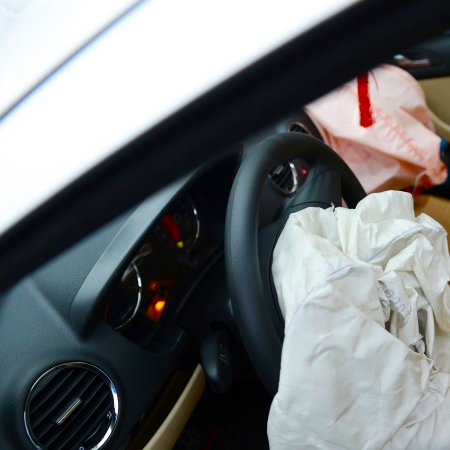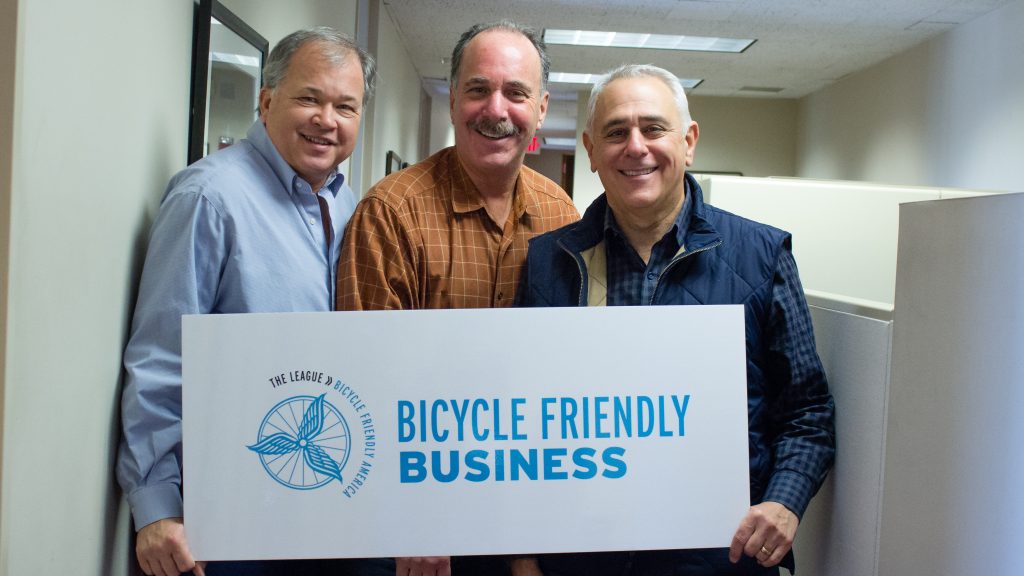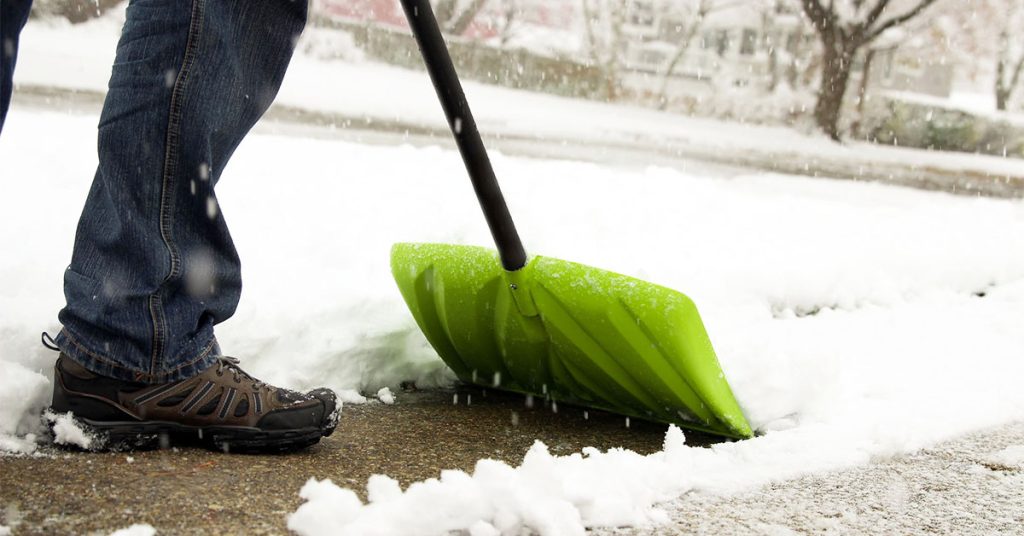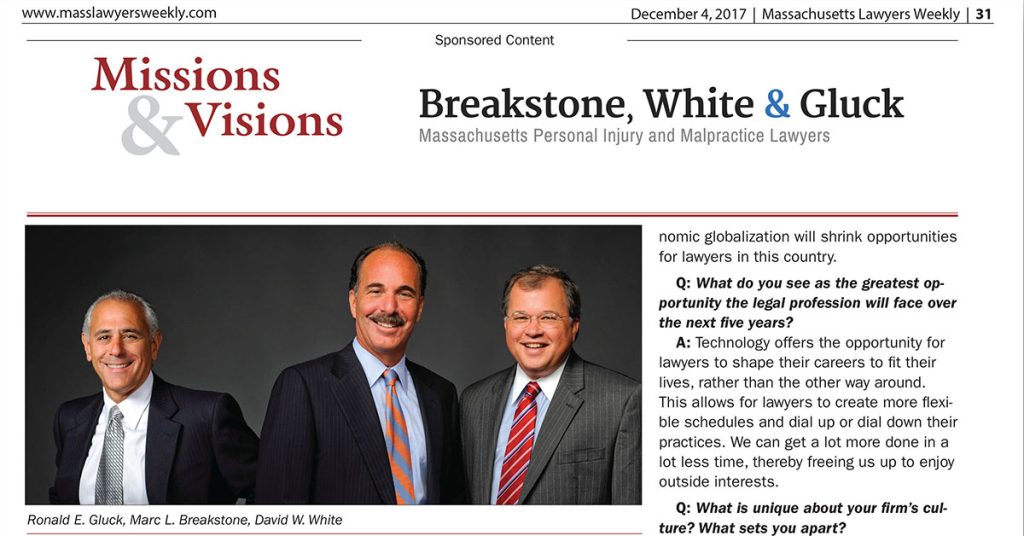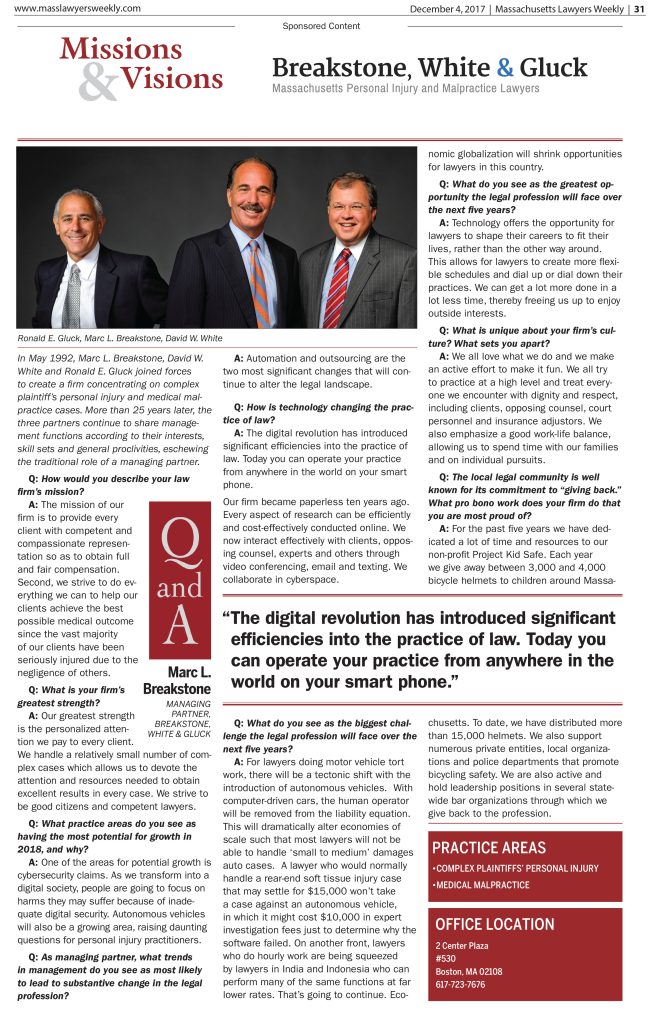Posts by Breakstone, White & Gluck
Preventing Injuries: Check Your Seat Belts and Child Passenger Safety Seats
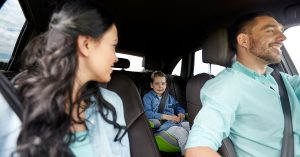 There is nothing more important than protecting your family and other passengers in the car. Many of us drive less often in the winter in Massachusetts. But in a few weeks, families will be back in the car more for afterschool sports, activities and weekend trips.
There is nothing more important than protecting your family and other passengers in the car. Many of us drive less often in the winter in Massachusetts. But in a few weeks, families will be back in the car more for afterschool sports, activities and weekend trips.
Take a few minutes now to inspect your vehicle’s seat belts and child passenger safety seats. Make sure this equipment is working and properly adjusted to fit each child. Replace car seats if your children have outgrown them. Then talk to your family about the importance of always wearing a seat belt.
Dangers on the Road for Children
- Roughly 3 children in the U.S. die each day as a result of motor vehicle accidents, according to the National Highway Traffic Safety Administration (NHTSA).
- Car accidents increased 5.6 percent nationwide from 2015 and 2016. Child deaths in motor vehicle accidents increased 8 percent.
- Children were occupants in 74 percent of fatal car accidents in 2016. They were pedestrians in 20 percent of cases and were on bikes in about 5 percent of cases.
Seat Belt: Buckle Up, Every Ride
Your car should have working seat belts. Do a visual inspection and also sit in each seat while buckling up. If your seat belts are not working, call your auto dealer to have them repaired. Then, wear your seat belt on every trip, no matter how short. Insist your children and other passengers do as well. Drivers carry a lot of influence when it comes to seat belt use, especially parents.
Properly buckle your children in, especially when they are just transitioning from booster seats to seat belts. As they get older, they will start to buckle themselves in, but continue to check their seat belt before you start driving, even if just from the front seat. You want to make sure the straps are not tangled or jamming. Buckle up unused seat belts to discourage children from playing with them. Always lock your power windows so children cannot operate them from the backseat and finally, never leave your children alone in motor vehicles to play with seat belts unsupervised in your vehicle.
Watch this video to see how to buckle your child in:
Teenagers may need the most reminders, whether they are passengers or drivers. In 2016, 47 percent of young drivers who died in crashes were not wearing seat belts, according to the NHTSA. As a parent, you have to teach your teenager to be both a safe driver and a safe passenger and always, always wear seat belts. The decisions your children make while driving with friends are critical.
Massachusetts Law on Seat Belts
In Massachusetts, children must start wearing seat belts at age 8 or when they outgrow their child passenger safety seat.
The Massachusetts seat belt law requires drivers and passengers to wear seat belts while traveling in the front and back of vehicles. According to the Governors Highway Safety Association (GHSA), Massachusetts is one of 15 states which have a secondary enforcement seat belt law. While seat belts must be worn, drivers can only be cited for a seat belt violation after they are stopped for an unrelated traffic offenses. In primary enforcement states, drivers can be pulled over solely for not wearing a seat belt.
Seat belt use was 89.7 percent in 2017, according to the NHTSA. This increased about 5 percent from 2009, which is good news. Except that seat belt use was the lowest in the Northeast. Some 86.5 percent of drivers and passengers buckled up, compared to 94.5 percent out West. The best thing you can do is go for a 100 percent seat belt rate in your car.
Child Safety Seats: The Challenge
Car accidents are the leading cause of death for children and teenagers, according to the Centers for Disease Control and Prevention (CDC). Safe Kids Worldwide reports child passenger safety seats can reduce the risk of death by 71 percent. The problem is car seats can be hard to install, expensive and are frequently recalled.
Massachusetts has a Child Passenger Safety Seat law to protect young passengers:
- Children who are younger than 8 years old (or under 57 inches tall) must use an age-appropriate federally-approved child safety seat.
- Child safety seats should be placed in the back seat (if your vehicle doesn’t have a back seat, you can’t install the car seat in the front seat).
- Older children must wear a seat belt. It is recommended that children sit in the back seat until they reach age 13.
Parents must use an age appropriate car seat. Infants typically use a rear-facing car seat until age 2, then grow into a forward facing car seat and then a booster seat. Check these guidelines for help purchasing a child passenger safety seat.
Help Finding the Right Child Passenger Safety Seat
Common Mistakes in Fitting Car Seats
- Rear-facing infant/convertible seats are often installed with the wrong amount of incline while forward-facing car seats can be fit too loosely.
- A forward-facing seat should not be able to move more than an inch laterally. In one study, the NHTSA found more than 17 percent of forward-facing car seats were able to move more than 2 inches.
- A common mistake with booster seats is the lap belt position. Lap belts should sit on the child’s hips and thighs, not the abdomen or rib cage.
Source: NHTSA, National Child Restraint Use Special Study, June 2015
Where You Can Find Help
If you are having trouble with your car seat installation, ask if your local police department offers free car seat inspections. You can also check this website to find other resources in the area.
Child Car Seat Safety Information from Manufacturers
Register your child safety seats with the manufacturer so you will be notified if there is a recall. Even when you carefully research a product, these recalls can and do happen. Graco has recalled millions of child car seats, most for unsafe buckles, but also other defects. Other manufacturers have issued recalls when seats have failed to mount and when pieces posed a potential choking hazard.
Finally, read the manufacturer’s instructions for set up and check the expiration date. Many people do not realize that car seats have an expiration date.
About Breakstone, White & Gluck
For more than 30 years, the lawyers of Breakstone, White & Gluck have represented individuals and families who have been injured by negligent and reckless drivers in Massachusetts. Our Boston car accident lawyers are committed to fighting for justice for every client and have been consistently recognized for our results by Super Lawyers, U.S. News – Best Law Firms and Martindale Hubbell.
For a free legal consultation, contact us at 800-379-1244 or 617-723-7676 or use our contact form.
5 Steps to Take Now for a Safe Bike Season in Massachusetts
 Boston saw 70 degrees in February last week. Naturally, many of us are now ready for Spring. If you are a cyclist or have a child who rides, now is the time to get ready for a safe cycling season.
Boston saw 70 degrees in February last week. Naturally, many of us are now ready for Spring. If you are a cyclist or have a child who rides, now is the time to get ready for a safe cycling season.
The attorneys of Breakstone, White & Gluck have long represented cyclists who have been injured by negligent drivers in Massachusetts. We are committed to preventing these bicycle accidents and reducing injuries. In a few weeks, we will begin the 6th year of our Project KidSafe campaign, donating bicycle helmets to children in Boston and other communities. Bike helmets are critical to preventing concussions and traumatic brain injuries. And they are most effective when cyclists start wearing them at an early age with positive reinforcement from parents and other family members.
We will share more on our campaign soon. For now, we have a few bike safety tips from our attorneys and the League of American Bicyclists to help you get ready for a safe cycling season.
1) ABC Quick Check
Check the basics, including the air in your tires, your brakes and the cranks and chain. Then check your quick releases to make sure they are all closed and pointing toward the back of your bike. Then take a quick ride to make sure your bike is properly working. If you are a parent, watch your child on a test ride.
2) Get a Bike Helmet
Always, always wear a properly fitted bicycle helmet. Purchase a new helmet every few years or sooner if you have been involved in a bike crash. A helmet is a critical tool in preventing head injuries and is required by law for cyclists who are 16 and younger in Massachusetts. Families who bike together should wear helmets together. Children are more likely to adopt the habit if their parents do the same.
We are often asked whether cyclists should purchase helmets online or shop local. We suggest you visit the local bicycle shop. Try a few helmets on while getting help from an experienced cyclist. Buying the right size is hard and an experienced cyclist can be very helpful. Beyond that, bicycle shops are a lot of fun. You can learn a lot about cycling in your area by visiting one.
Here is a video on how to fit a helmet.
3) Stock Up on Bright Colored Clothing
Whether you ride in cycling gear or street clothes, we suggest you purchase a neon safety vest for yourself and family members. You can wear it every time you ride to stand out or just in busy traffic.
4) Check Your Equipment
In Massachusetts, cyclists must use bike lights so they are visible to motor vehicles in the morning, up to one-half hour before sunrise, and in the evening, starting no later than thirty minutes after sunset. Remember—dusky hours can make you very hard to see, which is why that bright clothing is even more important. Read more about the law on our website.
5) Prepare for the Bike Trail
Remember the rules of safety on bike trails, too, and always be considerate of other cyclists. Do not speed. Travel on the right. Pass on the left. Use a bell or announce you plan to pass another cyclist. Although you are permitted to ride two-abreast, courtesy suggests you should ride single file when you travel in a group. Finally, expect to stop when the bike trail crosses street traffic.
About Breakstone, White & Gluck
The Boston personal injury lawyers at Breakstone, White & Gluck have over 100 years combined experience representing pedestrians, cyclists and others injured by car accidents. We are committed to safety for cyclists. Through our Project KidSafe campaign, we have donated more than 15,000 bicycle helmets to children in Massachusetts. For our commitment to safety, our firm has been recognized by the League of American Bicyclists as a Silver Level Bicycle Friendly Business.
If you have been injured by someone else’s negligence, it is in your best interests to consult a personal injury lawyer and learn your legal rights. For a free legal consultation, contact our attorneys at 800-379-1244 or 617-723-7676 or use our contact form.
More NFL Players are Self Reporting Concussion Symptoms
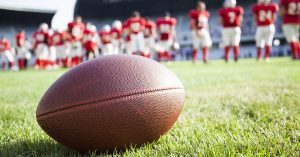 Professional football players face a high risk for concussions, far greater than most of us. But Rob Gronkowski’s concussion a few weeks ago was a reminder that concussions can happen when we least expect them, even in the middle of a big game. And when they do, the game must stop.
Professional football players face a high risk for concussions, far greater than most of us. But Rob Gronkowski’s concussion a few weeks ago was a reminder that concussions can happen when we least expect them, even in the middle of a big game. And when they do, the game must stop.
Much has changed over the past decade, as hundreds of former NFL players have sued over head injuries. Every state now has a concussion protocol for student athletes. In Massachusetts, students, coaches and parents are now trained to recognize concussion symptoms and how to respond. But others should also be aware of the risks. Beyond the playing field, concussions can happen in car accidents, construction accidents, falls and other situations.
Concussions are a mild Traumatic Brain Injury (TBI) which are often caused by an impact to the head. Concussions can be hard to recognize at first, with some initial symptoms mirroring the flu.
According to the Centers for Disease Control & Prevention (CDC), symptoms include:
- Headache or pressure in the head
- Temporary loss of consciousness
- Nausea and vomiting
- Fatigue and dizziness
- Confusion
- Slurred speech and/or a delayed response
Other symptoms may take a few hours or days to show, including poor concentration, memory problems, personality changes and sleep disturbances.
The NFL has specialists watch players for concussion symptoms. Last year brought a 16 percent increase in concussion reports. Yet there was one positive. Players self reported and initiated 28 percent of concussion evaluations in preseason and the regular season. This was up 9 percent. The NFL released these preliminary figures in January.
Though it was hard to see the Patriots fall in the Super Bowl, the increase in self-reported concussions is still a win. Here are some tips for concussion prevention beyond the football field:
Sports
Passed in 2010, Massachusetts’ concussion safety law requires students, parents, coaches and anyone involved in high school sports to be trained on how to identify the symptoms of a concussion. Students must be taken out of the game if they are injured and cleared by a doctor before they can return. Schools are required to report the number of concussions to the state.
This law provides a good foundation for educating the public about concussions and will protect students. If you are not a parent or student, you can find information about concussions online. The Mayo Clinic offers this resource.
Car Crashes
A high-impact traffic crash can cause head injuries and bruising you may not immediately see. Always receive medical treatment after a car accident. If you were traveling with a young child, it is essential. They may not be able to communicate the nature of their injuries. This is critical because car accidents are the leading cause of TBI-related deaths among children and young adults ages 5 to 24, according to the CDC.
Falls
Falls are the leading cause of TBI, with children and the elderly the most vulnerable, according to the CDC. Nearly half – 47 percent – of all individuals with TBI injuries who go to the emergency room, hospital or die have fallen.
There are a few steps you can take to prevent a concussion from being left untreated.
Adults who care for elderly parents can talk to them about the risks associated with falls and symptoms of a concussion.
First, let your parent know they should visit their medical doctor or an emergency room immediately after a fall. Then, do not assume they will. Many people are reluctant and unsure about going to a doctor. Let your parent know they can always call you and you will drive them.
Parents can protect young children by gating off staircases and laying down slip guards to prevent slips and falls. This is especially important for wooden staircases.
Stay informed about concussion policies at schools and daycare programs. Make sure your emergency contact information is up to date so the school can always reach you. On playgrounds, make sure your child is playing over soft material, not pavement. Give them an extra hand when venturing on new equipment for the first time. Steer them toward something else if they are not quite ready.
About Breakstone, White & Gluck
The Boston personal injury lawyers at Breakstone, White & Gluck specialize in representing clients in cases involving traumatic brain injuries. For a free legal consultation, contact our firm at 800-379-1244 or 617-723-7676 or use our contact form.
Elevators and Escalators Have Long Been Out of Order at Westwood Train Station
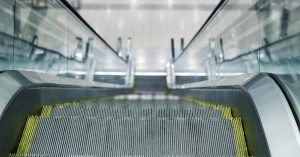 Commuting is a major stress in the Boston area. Having to ride the MBTA should ease the burden. But it often just adds anxiety, especially for commuters at the Route 128/University Station in Westwood.
Commuting is a major stress in the Boston area. Having to ride the MBTA should ease the burden. But it often just adds anxiety, especially for commuters at the Route 128/University Station in Westwood.
Two news stories have put the spotlight back on the long-running equipment and system problems at the Westwood station, including out-of-service elevators and escalators. Offering both MBTA and Amtrak train service, the Westwood station serves half a million commuters each year. When systems are running on time, you can take the MBTA into Boston in less than a half hour. The MBTA also offers service to Providence or Amtrak provides travel beyond Rhode Island.
With over 2,500 spaces, the Westwood station is also one of the rare MBTA stops where you can still find a parking space. The problem is walking through the station.
The station is owned by Amtrak, which has frequently closed escalators and elevators over the past few years. One of the two elevators has been out of service altogether for several years. They are in no condition to re-open. According to a recent NBC Boston report, every escalator and elevator has expired state certifications. NBC Boston first reported on the station three years ago, so this isn’t a new story. It is just one which has grown worse.
Amtrak says it has no responsibility to make repairs, citing federal law which exempts it from meeting all state and local building regulations. State officials say they have met with Amtrak, to no avail.
Failure to maintain the escalators and elevators creates a safety hazard for commuters and puts an extra burden on the handicapped. NBC Boston interviewed a rider who was legally blind and spoke about having to climb the Westwood station’s tall staircases. As a result, he has missed his special needs van on some days.
We need to learn from past tragedies on escalators and elevators, including the fall that killed 4-year-old Mark DiBona in 2011. The child fell from a defective second-floor escalator at the Auburn Mall. The escalator had a 6 inch gap, which exceeded state regulations. Lawyers for the boy’s family said the escalator management company was aware of the gap and had filed plans with the town to fix it. But the company never followed up. The little boy suffered a head injury in the fall and died the next day.
Hopefully, the state, MBTA and Amtrak will reach agreement on the much needed repairs at the Westwood station soon. All three have a responsibility to the public and commuters. But it’s also important because another public safety concern has recently arisen at the station.
After a long day in Boston, every commuter just wants to get home. Over the past year, the rush has gotten worse at the Westwood station. Some commuters are now running to their cars to beat traffic backups and 20-minute delays leaving the station.
The traffic backups are a new development. Drivers used to have two choices to pay for parking. They could pay inside the station with their credit card or they could simply drive through the parking garage exit. The parking fee would be deducted from their car’s EZPass. Now, the MBTA requires drivers to stop at the parking exit and select how they want to pay. Meanwhile, traffic lines up and pedestrians are put at risk.
WBZ’s I-Team reported on the parking garage earlier this month. The MBTA said the new system has reduced duplicate charges, resulting in fewer refunds. But things need to change at the Westwood station before there is a serious pedestrian accident.
If you see a safety hazard in any MBTA station, we encourage you to take a photo with your cell phone and report it. You can also report equipment that is out of service for a long period of time.
We suggest reporting the problem to at least two offices – the MBTA and the local police department. A local police department can log your complaint immediately while the MBTA or MBTA police may not respond for a few days.
You can also try submitting complaints to the town officials in the community where the MBTA station is located. Try the local building department, the Board of Selectmen or City Council office. Other resources are the state Department of Transportation, your state representative and your local regional transportation agency. These offices may not be directly responsible for a train or bus station, but it may help to keep them aware of ongoing transportation and safety issues.
Here are a few links:
MBTA Customer Support. This page gives you the option to upload a photo.
Regional Public Transportation Authorities in Massachusetts
Massachusetts Department of Transportation
About Breakstone, White & Gluck
The Boston personal injury lawyers at Breakstone, White & Gluck are experts in handling claims involving premises liability and injuries caused by defective property conditions. If you have been injured by someone’s failure to maintain their property, learn your rights. For a free legal consultation, contact Breakstone, White & Gluck at 800-379-1244 or 617-723-7676 or use our contact form.
Parents: Does Your College Student Think Drowsy Driving is Dangerous?
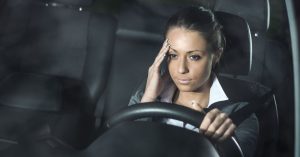
A new study shows college students are engaging in drowsy driving and do not consider it to be as dangerous as texting while driving and operating under the influence.
As a parent, you have probably talked to your college student about the risks of drunk driving and texting while driving on many occasions. What about drowsy driving? A new study reports college students are not taking this risk as seriously – even as drowsy driving causes an estimated 300,000 traffic crashes each year in the U.S.
The study was published in the February edition of the journal Sleep Health. Researchers conducted four focus groups involving 26 undergraduate students in 2016. Students were asked about their driving behaviors and perceptions about dangerous driving.
Most of the students considered themselves safe drivers, yet they viewed drowsy driving as less risky than operating under the influence of alcohol and distracted driving. Students actually said drowsy driving was “normal” and an “unavoidable part of their lives.” They admitted to drowsy driving in the past. Whether as a driver or passenger, many had actually been in some way involved in a drowsy driving car crash or near accident. In most cases, students were driving alone in the early morning or at night.
Takata Airbag Recalls Continue in 2018
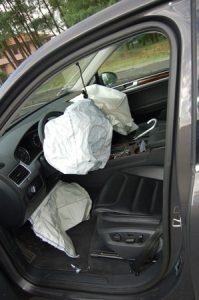 The National Highway Traffic Safety Administration (NHTSA) has expanded the Takata airbag recall by 3.3 million vehicles. The question now is how many more recalls are ahead?
The National Highway Traffic Safety Administration (NHTSA) has expanded the Takata airbag recall by 3.3 million vehicles. The question now is how many more recalls are ahead?
So many drivers have been impacted. To date, 34 million vehicles have been recalled, according to the NHTSA website. USA Today reports the airbags are now responsible for at least 20 deaths, while injuring 180 others. Millions of other drivers have had to wait out a slow replacement process.
The U.S. Department of Justice fined Takata $1 billion early last year. Because there are so many defective airbags, the NHTSA plans to issue phased recalls through December 31, 2019. Older vehicles and those in hot and humid states have received the highest priority. The schedule is designed to repair vehicles before the chemical in the inflator starts to break down.
Background
Even as we drove cars with its airbags, many of us had never heard the name Takata until 2014. This was a hard-to-forget year, bringing two of the largest auto recalls in U.S. history. First came G.M., which was forced to recall millions of vehicles with faulty ignition switches. The company went on to pay a record $35 million fine for failure to report the defect. Mary Barra, chairman and CEO of G.M., had to answer to lawmakers on Capitol Hill.
Then came Takata, the subject of that now famous New York Times report. The Times reported that Takata employees had tested airbags and the company knew they were defective years before speaking up. Under federal law, manufacturers have five days to report defects to the federal government.
The U.S. Department of Justice fined Takata $1 billion in January 2017. At the same time, it charged three Takata executives with wire fraud and conspiracy. The fine included $850 million in restitution for automakers who purchased the defective airbags. Another $125 million was set aside for those injured and their families.
What Drivers Should Know Going Forward
Takata airbags use ammonium nitrate inside the airbag’s inflator. When exposed to hot temperatures and humidity, the chemical can become volatile, exploding and shattering metal pieces into the vehicle.
The new recall is for frontal airbags in certain 2009, 2010 and 2013 vehicles made by 15 automakers. The automakers will provide more information about specific models in a few weeks.
If your car is not impacted, that is great news. But your vehicle may be subject to a future recall. Takata has to file five reports with the NHTSA. The fourth and fifth notices are due December 31, 2018 and December 31, 2019.
If your vehicle has defective airbags, call your dealer immediately to schedule a repair. Other drivers can stay informed.
The NHTSA urges drivers to check Safercar.gov or use its Recalls Lookup Tool periodically. If you check it today, remember that vehicles from the latest recall will be added in a few weeks. You can also sign up for recall alerts and check to make sure your vehicle’s registration is up to date. You want to make sure the manufacturer can contact you without delay.
About Breakstone, White & Gluck
The Boston product liability attorneys at Breakstone, White & Gluck have over 100 years combined experience representing those who have been injured as a result of someone else’s negligence. If you have been injured by a defective product, learn your rights. For a free legal consultation, contact us at 800-379-1244 or 617-723-7676 or use our contact form.
Breakstone, White & Gluck Named a Silver Level Bicycle Friendly Business by the League of American Bicyclists
Recognized for our Project KidSafe Campaign Donating Over 15,000 Children’s Bicycle Helmets and Support for Cycling Organizations
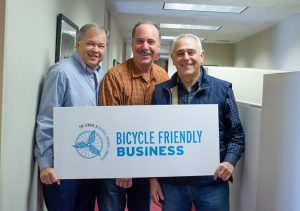
Attorney David W. White, Attorney Marc L. Breakstone and Attorney Ronald E. Gluck of Breakstone, White & Gluck. The firm was recognized as a Bicycle Friendly Business by the League of American Bicyclists.
Today, the League of American Bicyclists recognized Breakstone, White & Gluck with a Silver Level Bicycle Friendly Business award. This is a special honor, coming as we complete the fifth year of our Project KidSafe campaign, donating over 15,000 bicycle helmets to children in Massachusetts. We have distributed the helmets in partnership with over 40 community groups, local bicycle committees, police departments and schools.
The League of American Bicyclists announced 58 new and renewing businesses in its Bicycle Friendly Business program today. Breakstone, White & Gluck was one of three businesses recognized in Massachusetts and now joins 1,118 current Bicycle Friendly Businesses across the country, including local businesses, government agencies, and Fortune 500 companies that are transforming the American workplace.
“The League of American Bicyclists is excited to recognize this latest group of new and renewing Bicycle Friendly Businesses for making their workplaces and their communities safer, happier, healthier, and more sustainable through bicycling,” said Amelia Neptune, Director of the Bicycle Friendly America program. “We applaud these businesses, including Breakstone, White & Gluck, for leading the charge in creating a more bicycle-friendly America for everyone.”
“We thank the League of American Bicyclists for recognizing Breakstone, White & Gluck,” said Attorney David W. White. “With traffic congestion and the high cost of commuting in Massachusetts, our firm’s goal is to support safe and accessible cycling opportunities for workers, school children, college students and communities, as well as cyclists who enjoy the sport.”
White added, “We look forward to supporting the League’s work as part of our bicycle safety outreach efforts in 2018.”
Breakstone, White & Gluck is a Boston personal injury and medical malpractice law firm. Earlier this year, our partners, Marc L. Breakstone, David W. White and Ronald E. Gluck, celebrated our firm’s 25 years of successfully serving clients.
Project KidSafe
Founded in 2013, our Project KidSafe campaign has donated over 15,000 bicycle helmets to children in Boston, Cambridge, Somerville and across Massachusetts. Our firm has partnered with over 40 bicycle community partners, including Massachusetts Safe Routes to School, Boston Bikes’ Roll It Forward, CYCLE Kids and Somerville Public Schools, the Kiwanis Club of Somerville and Bikes Not Bombs. Each year, we partner with 10 police departments, including the Boston, Cambridge, Quincy and Everett police departments. Please visit our website for a list of our partner organizations.
As part of our Project KidSafe campaign, our attorneys participate in the National Bike to Work Day at Boston City Hall Plaza each May, distributing free helmets to cyclists who need a replacement and to workers who want to start riding. For the past four years, we have also supported Boston Bikes, a City of Boston program, and MassBike in campaigns to distribute bike lights. Massachusetts law requires cyclists to use bike lights to stay visible after sunset and before sunrise.
Breakstone, White & Gluck is proud to support MassBike and Boston Cyclists Union in advocating for cycling safety and several clubs, including the Northeast Bicycle Club, New England Mountain Bike Association (NEMBA) and Charles River Wheelmen.
About the Bicycle Friendly America Program
The League of American Bicyclists is leading the movement to create a Bicycle Friendly America for everyone. Through its Bicycle Friendly America awards, it recognizes businesses, as well as states, communities and universities. Massachusetts is currently ranked the 4th most Bicycle Friendly state. Eleven communities have earned bicycle friendly awards, including Cambridge and Somerville, which have Gold Level awards. Learn more about the program here: www.bikeleague.org/BFA or read the most recent Bicycle Friendly Business award list.
Massachusetts Property Owners Now Have a Duty of Reasonable Care in Snow Removal
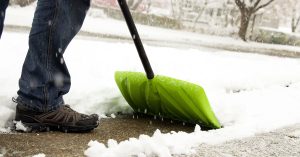
Property owners, grab your shovels, some salt and a little patience. The snow is back in Boston and this is just the beginning.
Snow Removal Was Not Required in Massachusetts
We shouldn’t say the beginning. Snow and ice is the oldest story in New England. But for many years, Massachusetts law distinguished between “natural” and “unnatural” snow accumulation and held that property owners were not liable for injuries caused by a natural accumulation of snow and ice. But the Supreme Judicial Court abolished this distinction in Papadopoulos v. Target, 457 Mass. 368 (July 26, 2010).
In Papadopoulos, the plaintiff slipped on ice in the parking lot outside a Target department store in Danvers. After leaving the store, the plaintiff fell on a patch of ice on the pavement. The patch formed after a snowplow had worked in the area, followed by a snowstorm. He filed suit against Target Corporation and Weiss Landscaping Company, Inc., which was responsible for the snow and ice removal.
The trial court ruled the patch was a “natural accumulation” of snow. The Appeals Court affirmed this decision, but the Supreme Judicial Court rejected the distinction between natural and unnatural snow accumulation. With this decision, property owners had to accept the same duty of care in snow and ice cases as in other cases. They must keep their property reasonably safe.
Massachusetts Property Owners Now Have a Duty of Reasonable Care in Snow Removal
This was a good decision for consumers, because now, those who fall on someone’s property can now seek compensation for their injuries and recovery if the property was not properly maintained. Homeowners, landlords, businesses and commercial property owners now have a duty of reasonable care to clear the snow and ice.
Since Papadopoulos, the courts have recognized this responsibility with an occasional exception for commercial property owners. In some cases, the courts have found store owners or tenants which operate in a leased space are responsible for the maintenance, and not the property owner. This distinction turns on the fact the tenant has control of the property. Lease provisions also usually require the tenant to indemnify the landowner.
If You Are Injured on Snow and Ice
If you slip and are injured on snow and ice, you have rights, but you need to act promptly. First, you should always receive medical treatment for your injuries. Then, notify the owner or person in control of the property that you were injured on their property. This must be done within thirty days! (M.G.L. c. 84, § 21).
Before you notify a property owner, consult a Boston snow and ice accident lawyer. At Breakstone, White & Gluck, our attorneys have extensive experience in this area. We are here to answer your questions and advise you of your legal rights. You may be entitled to payment of medical bills, lost wages and other damages.
A Recent Case Handled by Breakstone, White & Gluck
When our client fell on an icy ramp in Walpole, she turned to Attorney Marc L. Breakstone for help. He investigated and negotiated an $825,000 settlement.Attorney Breakstone’s investigation found the handicap ramp, which was on a commercial property, had not been maintained. The area where our client fell was covered in ice and there was no hand railing. This was a violation of state and local codes. Read more about this case.
Breakstone, White & Gluck Featured in Massachusetts Lawyers Weekly
The Holiday Toy “Don’t Buy” List
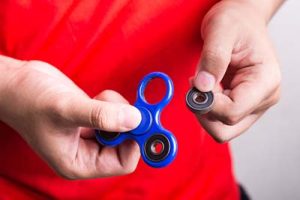
Fidget spinners have been one of the most popular gifts of 2017, but the small pieces can fall out and cause a child to choke.
By now, the children in your life have probably sent you their holiday toy wish lists. But just as important is the holiday “don’t buy” list.
W.A.T.C.H. released nominees for its “10 Worst Toys of 2017” list in mid-November, leading with Hallmark’s “Ittys Bitty” Baby Stacking Toy. This toy was recalled by the Consumer Product Safety Commission (CPSC) in August. The fabric hats and bows on the Disney characters can detach and cause a young child to choke. This toy also has no safety warnings or age recommendations.
Toy 2: Tolo’s Tug Along Pony. This toy is marketed for children 12 months and older. It has a 19-inch cord, which is permitted for pull-along toys. But W.A.T.C.H. says this toy poses a strangulation hazard and does not carry any safety warnings.
Toy 3: The Wonder Woman Battle-Action Sword. This toy is recommended for children age 6 and up. Before you buy, note that the sword is large and sharp enough to cause facial or impact injuries. The packaging also gets a failing grade. It encourages children to “fight alongside men in a war to end all wars.”


